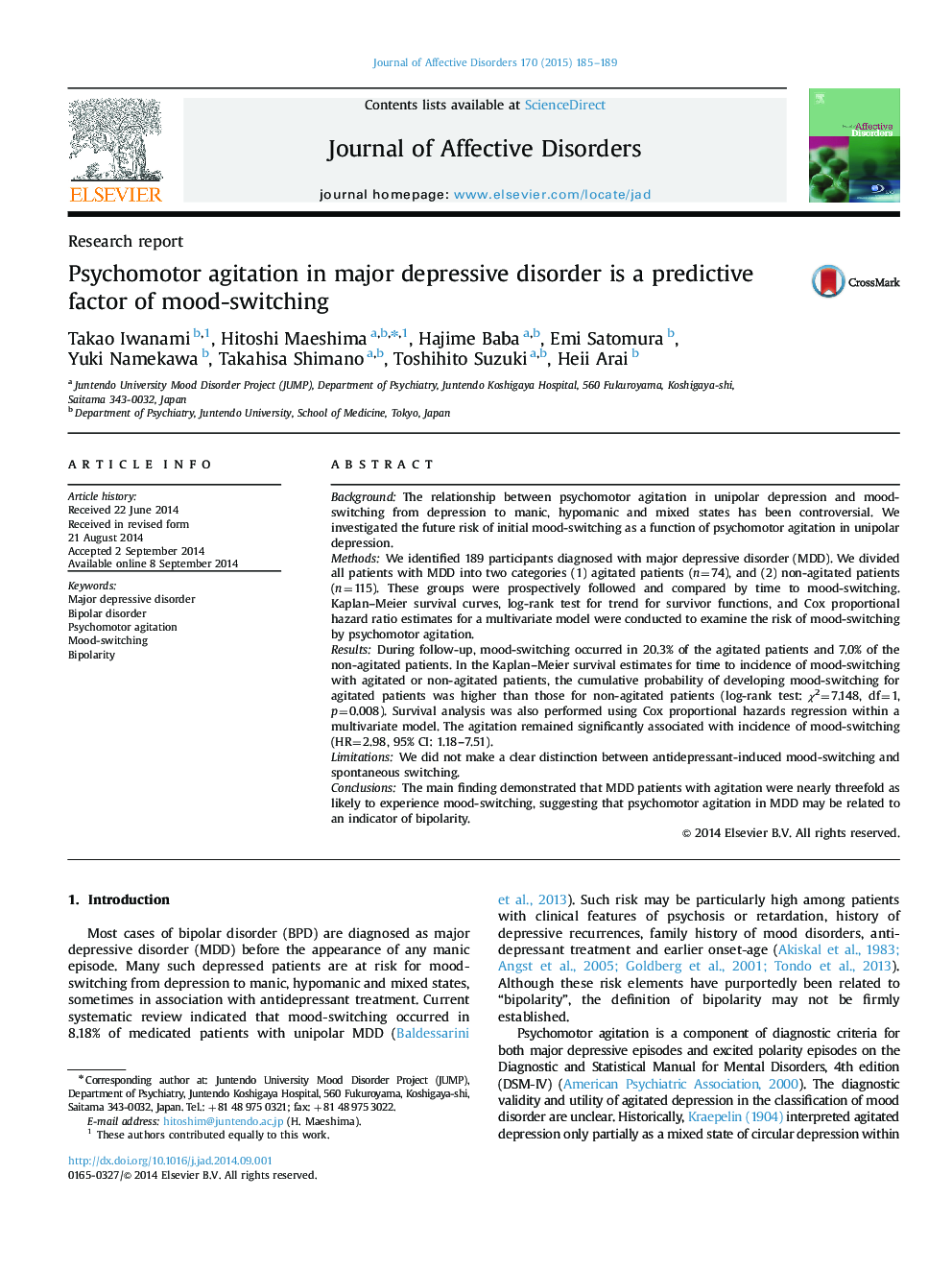| Article ID | Journal | Published Year | Pages | File Type |
|---|---|---|---|---|
| 6232172 | Journal of Affective Disorders | 2015 | 5 Pages |
BackgroundThe relationship between psychomotor agitation in unipolar depression and mood-switching from depression to manic, hypomanic and mixed states has been controversial. We investigated the future risk of initial mood-switching as a function of psychomotor agitation in unipolar depression.MethodsWe identified 189 participants diagnosed with major depressive disorder (MDD). We divided all patients with MDD into two categories (1) agitated patients (n=74), and (2) non-agitated patients (n=115). These groups were prospectively followed and compared by time to mood-switching. Kaplan-Meier survival curves, log-rank test for trend for survivor functions, and Cox proportional hazard ratio estimates for a multivariate model were conducted to examine the risk of mood-switching by psychomotor agitation.ResultsDuring follow-up, mood-switching occurred in 20.3% of the agitated patients and 7.0% of the non-agitated patients. In the Kaplan-Meier survival estimates for time to incidence of mood-switching with agitated or non-agitated patients, the cumulative probability of developing mood-switching for agitated patients was higher than those for non-agitated patients (log-rank test: Ï2=7.148, df=1, p=0.008). Survival analysis was also performed using Cox proportional hazards regression within a multivariate model. The agitation remained significantly associated with incidence of mood-switching (HR=2.98, 95% CI: 1.18-7.51).LimitationsWe did not make a clear distinction between antidepressant-induced mood-switching and spontaneous switching.ConclusionsThe main finding demonstrated that MDD patients with agitation were nearly threefold as likely to experience mood-switching, suggesting that psychomotor agitation in MDD may be related to an indicator of bipolarity.
